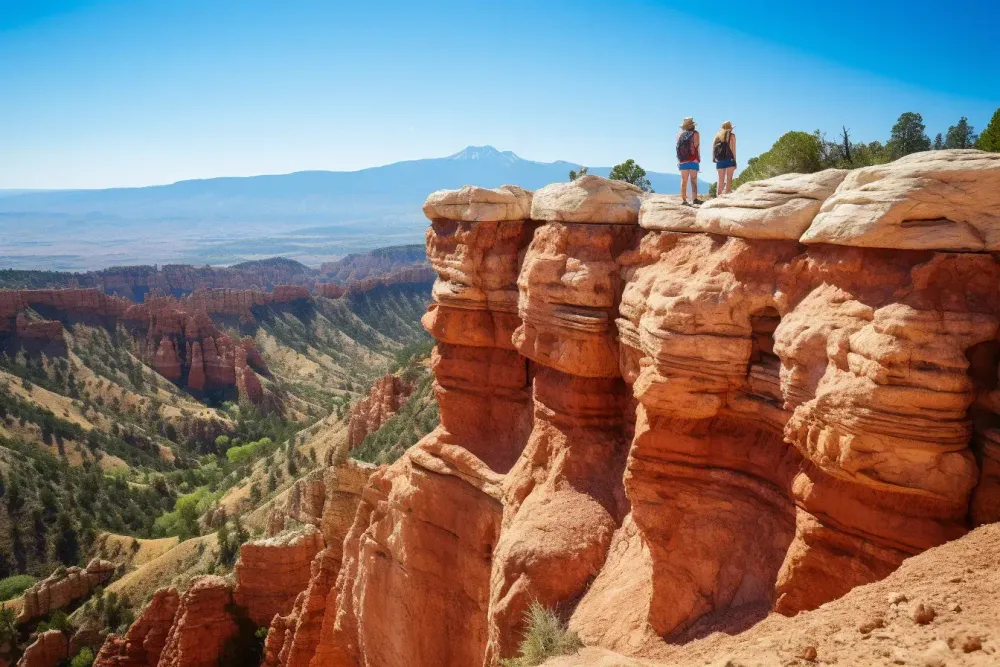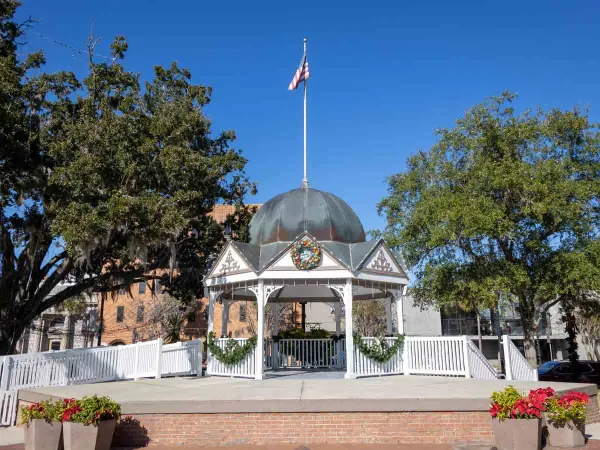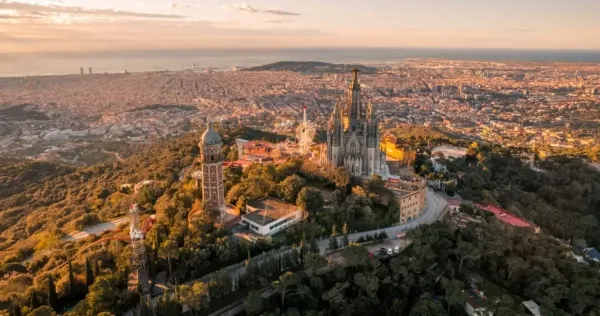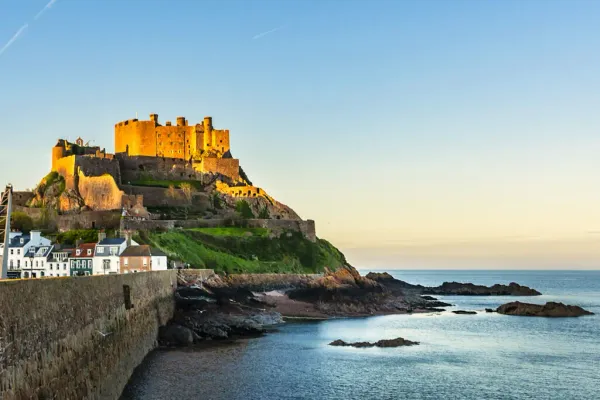Things To See In Southern Utah During Any Season
Southern Utah, a land of contrasting landscapes and timeless beauty, offers an array of spectacular sights and activities that captivate visitors throughout the year. This region, known for its diverse terrain that ranges from vast deserts to lush mountain valleys, stands as a testament to nature's artistic prowess. The beauty of Southern Utah lies not only in its iconic red rock formations and sweeping canyons but also in its ability to present a different facet of its charm in every season. Whether you're an avid adventurer, a nature lover, or simply a traveler in search of tranquility, Southern Utah has something to offer for everyone, making it a perfect destination to explore under the theme "Things To See In Southern Utah During Any Season."
As the seasons shift, so does the landscape of Southern Utah, each bringing its unique flavor. In the spring, the desert blooms with a vibrant display of wildflowers, painting the rugged terrain with a splash of color. The mild temperatures make it ideal for hiking through the labyrinth of canyons and exploring the natural arches that stand as geological marvels. Summer brings a warmer palette, with long days offering ample time for adventures. This season is perfect for delving into the heart of the national parks, where the sunsets cast a golden glow over the sandstone cliffs.
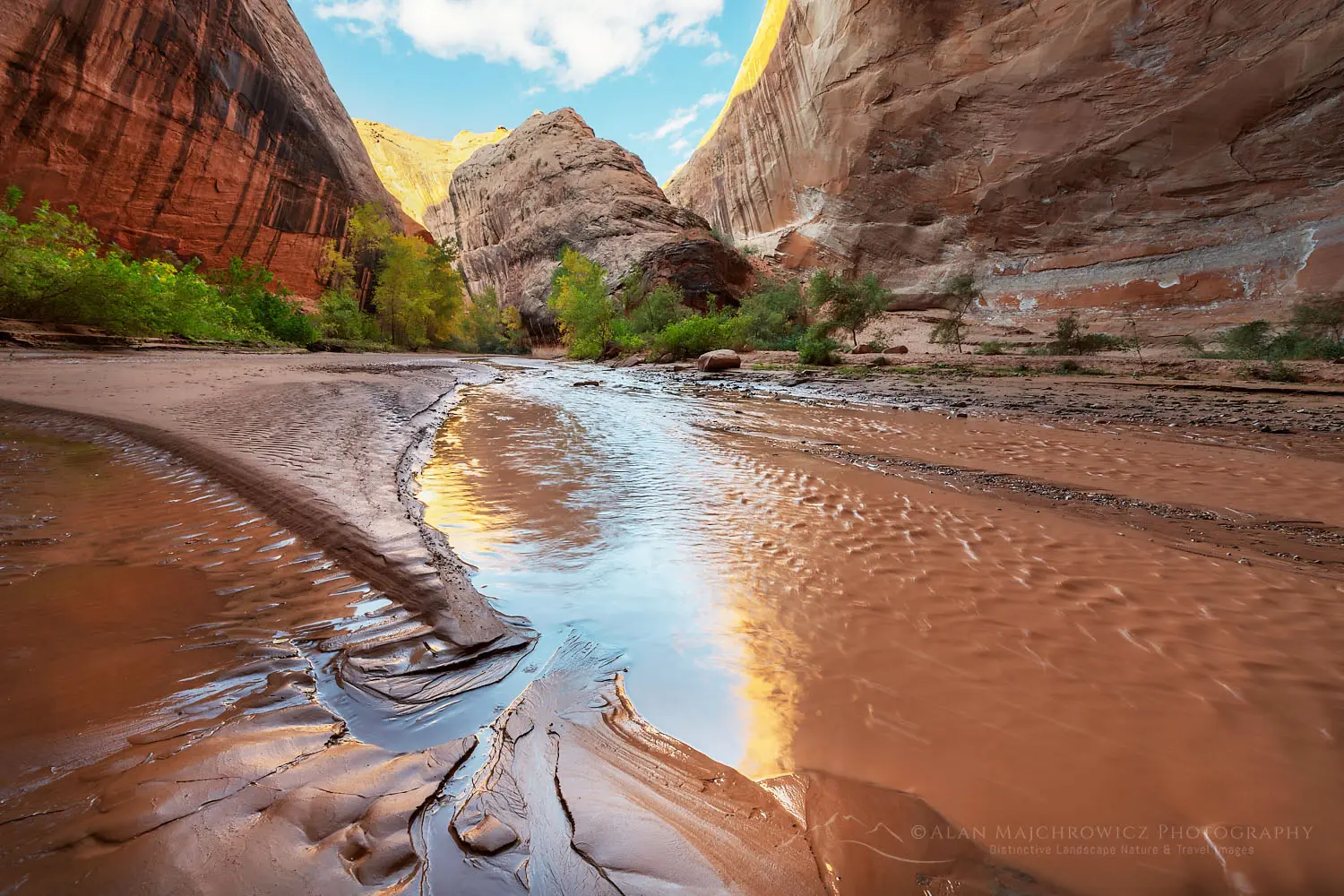
Autumn in Southern Utah is a spectacle of colors. The cooler temperatures and changing foliage create a picturesque setting, especially in the higher elevations where aspen and maple trees ignite the landscape with reds, oranges, and yellows. It's a season that beckons photographers and nature enthusiasts alike. Winter, often overlooked, transforms the red rock country into a serene wonderland. Snow-capped peaks and frosted canyons offer a peaceful escape. Activities like snowmobiling, skiing, and peaceful winter hikes provide a different perspective of the region's beauty.
Exploring "Things To See In Southern Utah During Any Season" reveals that this region is not just about the places but also about the experiences. From the awe-inspiring hike to Angel’s Landing in Zion National Park to the majestic views of Monument Valley, every location tells a story. The Mighty Five National Parks - Arches, Zion, Bryce Canyon, Capitol Reef, and Canyonlands - each present a unique adventure, from witnessing the star-filled night skies to exploring the depths of the slot canyons. Beyond the parks, the small towns like Kanab offer a glimpse into the local culture and history, serving as gateways to outdoor excursions.
Fairyland Canyon and Silent City: A Geological Wonderland
In the heart of Southern Utah lies a lesser-known but equally mesmerizing part of Bryce Canyon National Park: Fairyland Canyon and the Silent City. These areas, though not as frequented as the more popular Bryce Amphitheater, offer a unique and tranquil experience, showcasing the natural beauty and geological wonders of the region.
Fairyland Canyon is a testament to the power of natural forces over millions of years. It is a place where time seems to stand still, and the landscape tells the story of the earth's evolution. The canyon is renowned for its whimsical rock formations, known as hoodoos, which are spire-shaped rocks formed by the relentless forces of erosion. The hoodoos here take on an almost ethereal quality, especially at dawn and dusk when the sunlight plays off their red and orange hues, creating a magical atmosphere that truly justifies the name 'Fairyland.'

The beauty of Fairyland Canyon is not just in its stunning rock formations but also in its panoramic vistas. The Fairyland Loop, an 8-mile hike that meanders through the heart of the canyon, offers breathtaking views of the park and beyond. This hike, though moderately challenging, is a rewarding experience for those who undertake it. As you traverse the trail, you are treated to an ever-changing landscape, with each turn presenting a new and awe-inspiring view. From towering hoodoos to vast, open skies, the beauty of Fairyland Canyon is a feast for the eyes and the soul.
Adjacent to Fairyland Canyon is another geological masterpiece, the Silent City. As the name suggests, this area exudes a sense of stillness and timelessness. The Silent City is a vast expanse of tightly packed hoodoos that resemble ancient skyscrapers. Walking through this area feels like stepping into a different world, one that is both awe-inspiring and humbling. The formations here range from delicate spires to massive stone towers, each telling its own story of geological processes and the passage of time.
The Silent City is not just a visual spectacle; it's also a place of profound silence and serenity. This quietness adds to the area's mystique, making it a perfect spot for contemplation and connection with nature. The absence of the usual crowd noise found in more popular areas of the park allows visitors to truly immerse themselves in the natural beauty and wonder of the surroundings.
For those looking to explore these areas, there are several activities and sightseeing options available. Apart from hiking, visitors can enjoy horseback riding, which offers a unique perspective of the canyon and its formations. Photography enthusiasts will find endless opportunities to capture the stunning landscape, with the changing light conditions providing a myriad of photographic moments.
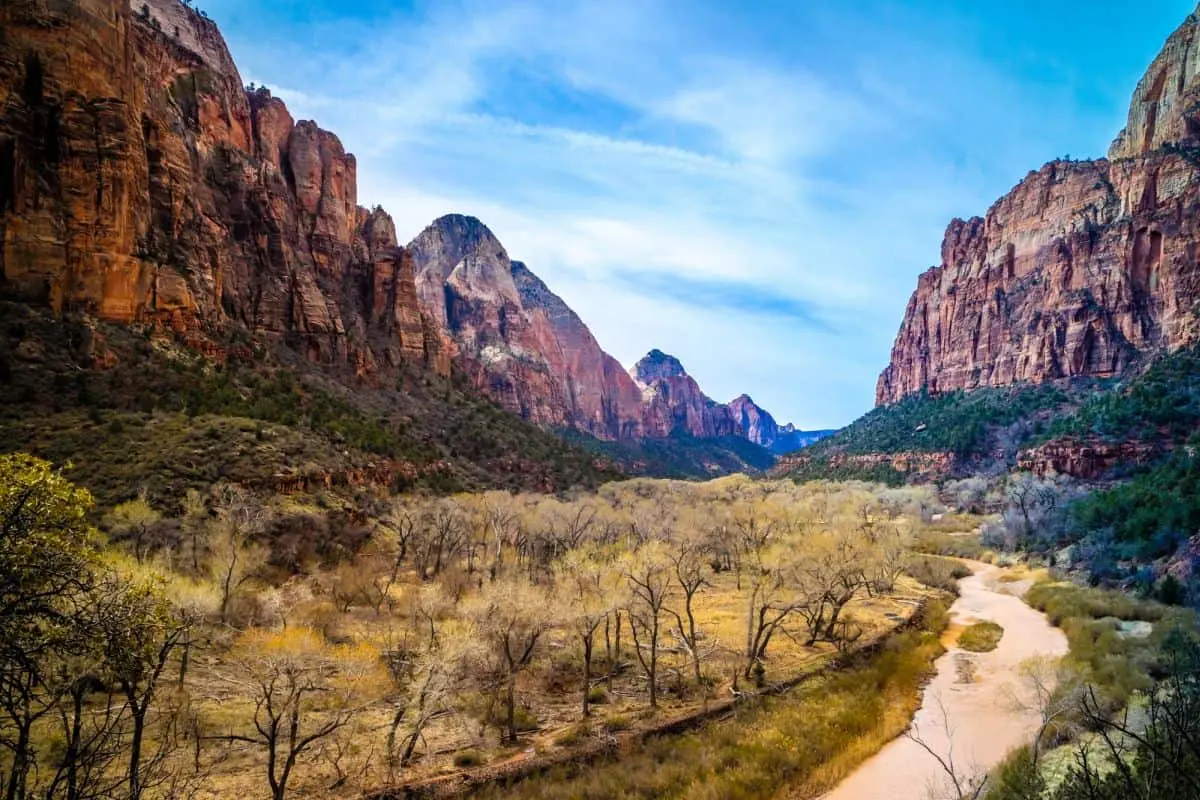
In addition to the natural beauty, Fairyland Canyon and the Silent City also offer a glimpse into the region's rich cultural history. The area has been inhabited by Native American tribes for thousands of years, and their connection to the land is evident in the various cultural sites and artifacts found within the park. Visiting these sites provides a deeper understanding and appreciation of the area's historical significance and the people who have called it home.
Monument Valley: Reliving the Old West
Monument Valley, a sprawling and majestic area on the border of Arizona and Utah, stands as a timeless icon of the American West. Known for its towering sandstone buttes and vast, desolate landscapes, it has captured the imagination of people around the world. This region is more than just a picturesque backdrop; it's a place steeped in history, culture, and cinematic fame, offering a deep and enriching experience to those who visit.
The historical significance of Monument Valley is deeply entwined with the Navajo Nation, for whom this land holds profound cultural and spiritual importance. The Navajo, or Diné, have lived in and around the valley for centuries, and their stories, traditions, and beliefs are intricately connected to the stark, awe-inspiring landscape. The buttes and mesas, with names like the Mittens, the Three Sisters, and John Ford’s Point, are not just geological formations; they are living testaments to the Navajo way of life and their deep respect for the land.
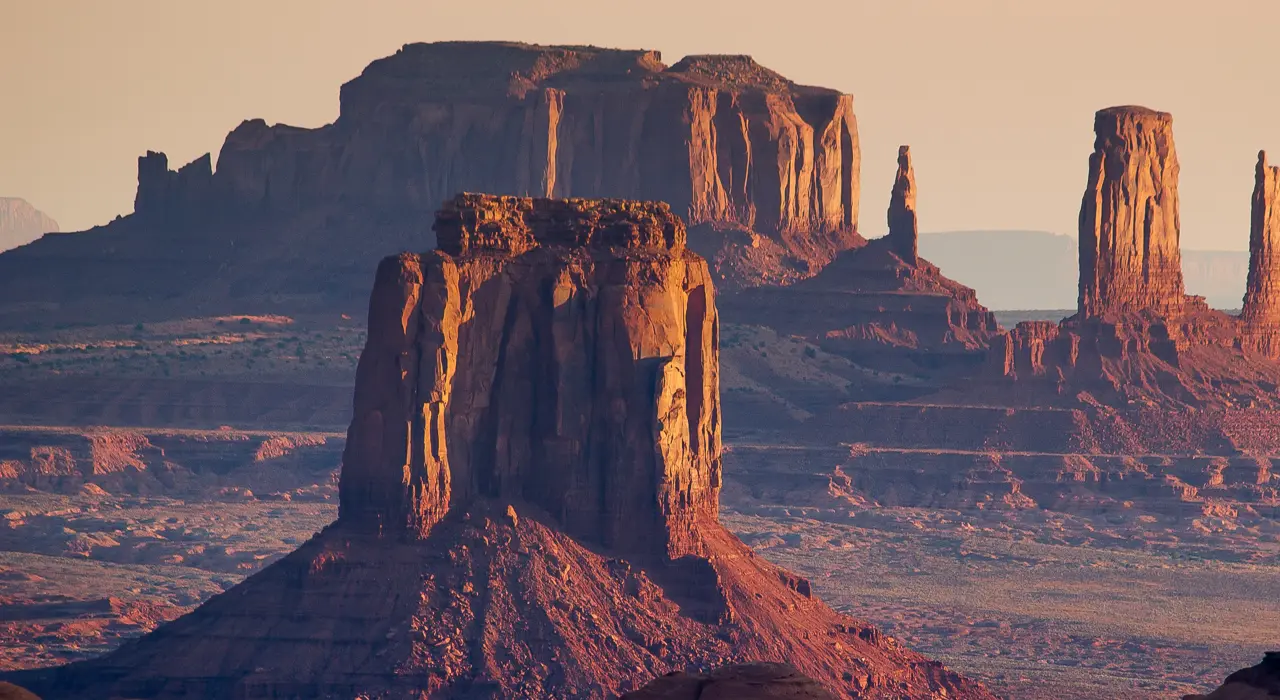
Monument Valley's cinematic fame came in the 20th century, when it became the quintessential setting for Western films. Director John Ford, captivated by the valley's grandeur, showcased its scenery in many of his films, starting with "Stagecoach" in 1939. This film, and many that followed, introduced audiences worldwide to the dramatic beauty of Monument Valley, cementing its status as a symbol of the American West. The buttes and vistas of the valley have since appeared in countless films, commercials, and television shows, making it one of the most recognizable landscapes in the world.
Visiting Monument Valley offers a chance to step into this storied landscape and experience its magnificence firsthand. The Valley Drive, a 17-mile dirt road that winds through the heart of the park, provides spectacular views of the famous formations. However, to truly appreciate the valley, one must go beyond the scenic drive. Guided tours, led by Navajo guides, offer an invaluable perspective on the history, culture, and geology of the area. These tours often include visits to ancient rock art sites, traditional hogan dwellings, and hidden wonders not accessible to the general public.
Angel’s Landing at Zion National Park: The Thrill Seeker’s Delight
Angel’s Landing, nestled within the majestic confines of Zion National Park in Utah, presents one of the most exhilarating and challenging hikes in North America. Renowned for its breathtaking views and heart-pumping ascent, this trail is a magnet for thrill-seekers and nature enthusiasts alike. The hike to Angel’s Landing offers an unparalleled opportunity to experience the raw beauty and grandeur of Zion, with vistas that stretch across the canyon and a path that tests the limits of one’s nerve and endurance.
The journey to Angel’s Landing is as remarkable as the destination itself. The 5.4-mile round trip hike begins at the Grotto trailhead, where the Virgin River accompanies hikers with its gentle flow. The trail initially winds through a scenic canyon, gradually ascending towards the more challenging segments. As hikers progress, they encounter Walter's Wiggles, a series of 21 steep switchbacks that lead to Scout Lookout. This section, while demanding, is just a prelude to the final and most thrilling part of the hike.
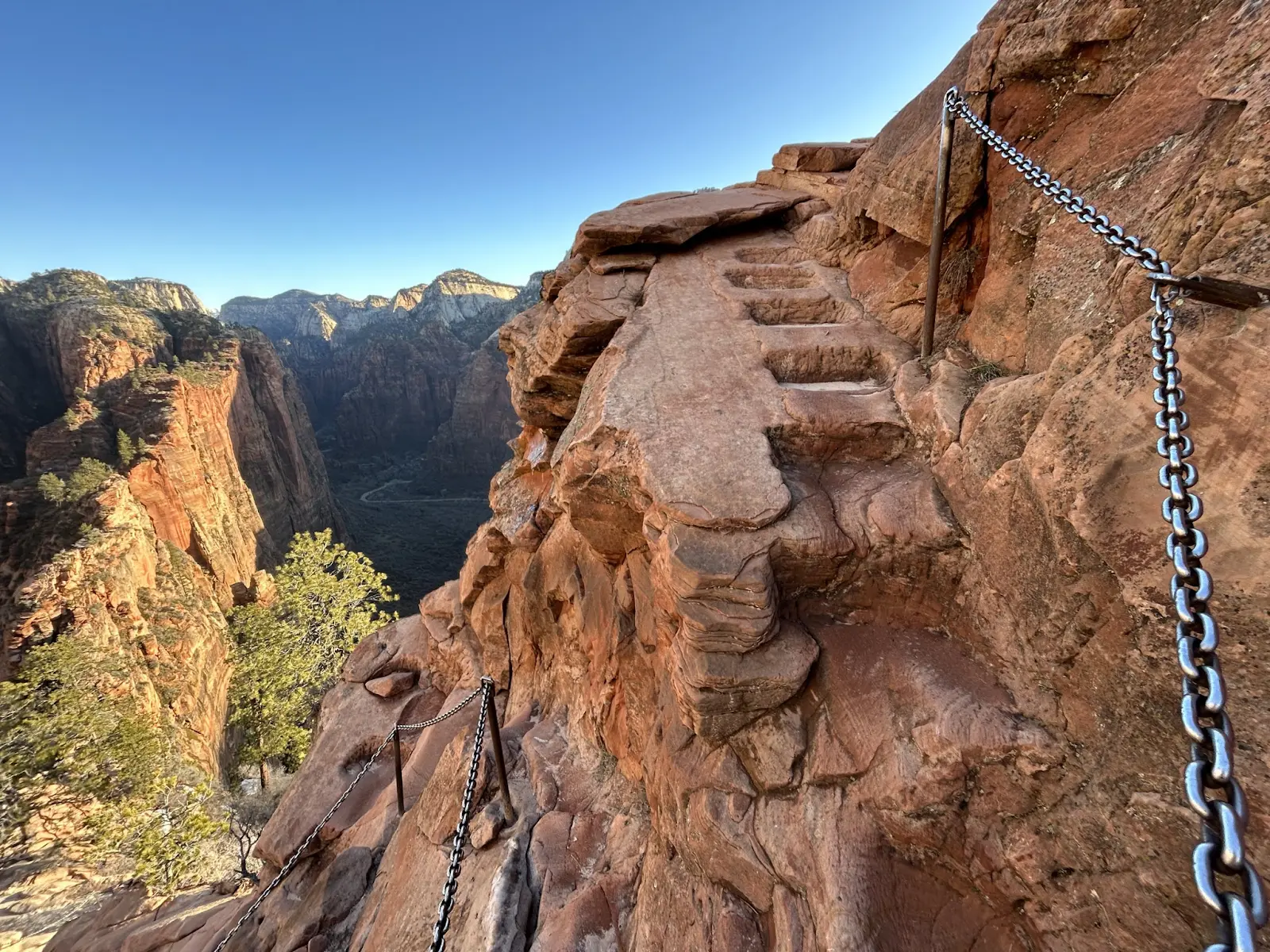
The last half-mile to Angel’s Landing is where the trail truly earns its reputation. This segment is not for the faint of heart, as it involves navigating a narrow ridge with sheer drops on either side. Chain handrails bolted into the rock provide support, but the exposure to steep cliffs requires hikers to proceed with caution and confidence. The trail culminates at Angel’s Landing, a lofty perch offering panoramic views of Zion Canyon, the Virgin River, and the surrounding peaks. The sight from the summit is sublime, a reward that justifies every step of the arduous ascent.
Safety is paramount when attempting the Angel’s Landing hike. The trail is not recommended for those with a fear of heights or for young children. Proper footwear is essential, as the path can be slippery, especially when wet. Hikers should check weather conditions before embarking, as rain and snow can make the trail dangerous. Additionally, it is advisable to start the hike early in the morning to avoid the midday heat and the crowds, as the trail can become congested.
Exploring the Mighty Five: Utah's National Park Quintet
Utah's National Park Quintet, affectionately known as the Mighty Five, represents some of the most stunning and diverse landscapes in the American Southwest. Each park – Arches, Zion, Bryce Canyon, Capitol Reef, and Canyonlands – offers its own unique array of geological wonders and outdoor adventures. A journey through these parks is a voyage through millions of years of natural history, a showcase of the Earth’s creative force.
Arches National Park, near the town of Moab, is a world-renowned destination famed for its over 2,000 natural sandstone arches. The park's iconic Delicate Arch, standing alone against the sky, has become a symbol of Utah's natural beauty. Beyond the arches, the park's landscape is a playground of towering spires, balancing rocks, and sweeping vistas. Hiking trails and scenic drives wind through this extraordinary terrain, offering visitors a chance to immerse themselves in its otherworldly beauty.
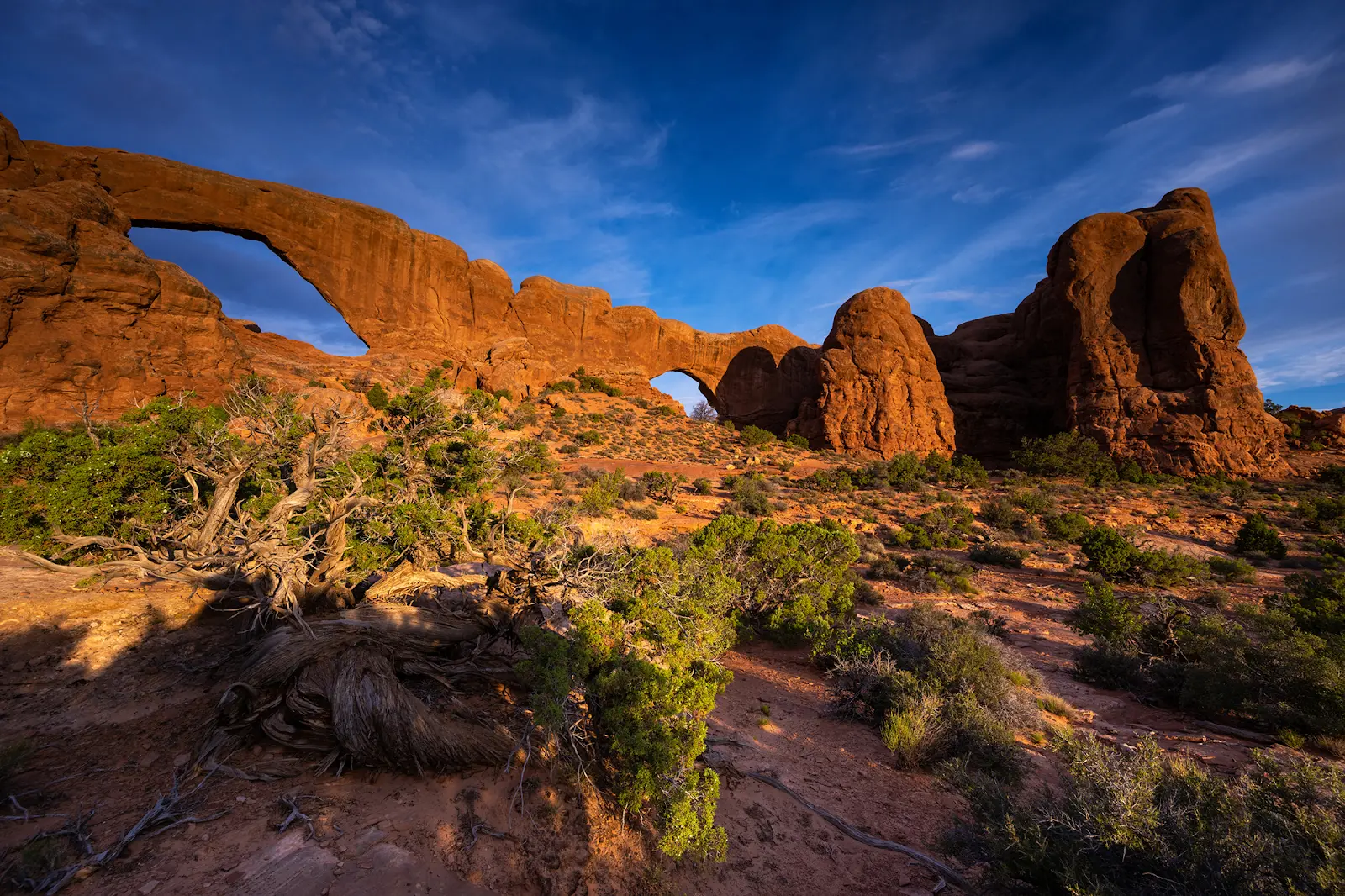
Zion National Park, characterized by its deep canyons and soaring cliffs, offers a contrasting experience. The park's centerpiece, Zion Canyon, is a magnificent gorge carved by the Virgin River. Hikers here can traverse the famous Narrows, wading through the river between towering canyon walls, or ascend to Angels Landing, a trail renowned for its stunning views and sheer drops. The park’s diverse ecosystems range from desert to forest, supporting a variety of wildlife and plant species.
Bryce Canyon National Park, famous for its unique hoodoos – spire-shaped rock formations – is a marvel of erosion. The park's expansive amphitheaters are filled with thousands of these red, orange, and white hoodoos, creating a surreal and vibrant landscape. Trails like the Navajo Loop and the Rim Trail offer up-close views of these formations, while the park's high elevation makes it a perfect spot for stargazing, with some of the darkest night skies in the United States.
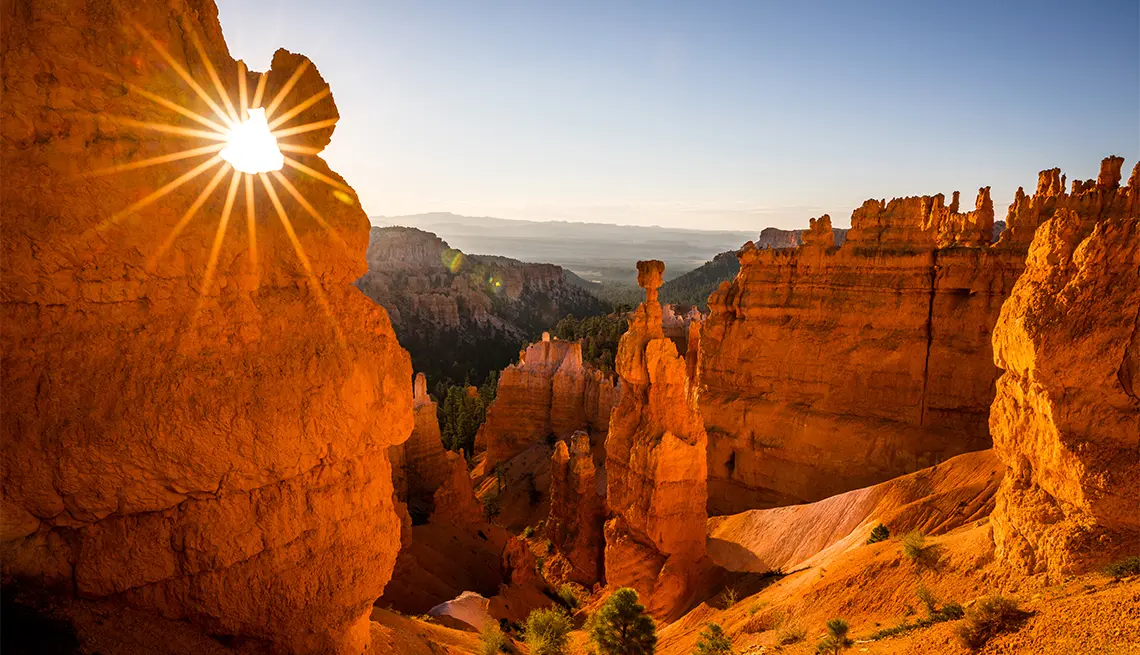
Capitol Reef National Park is often considered the hidden gem of the Mighty Five. Centered around the Waterpocket Fold, a 100-mile long wrinkle in the Earth’s crust, the park is a blend of cliffs, canyons, domes, and bridges. The park's rich history is evident in the ancient petroglyphs left by the Fremont people and the pioneer-era orchards in Fruita. Hiking, rock climbing, and scenic drives are popular activities, with the park's remote nature offering a sense of solitude and unspoiled beauty.
Canyonlands National Park, the largest of the Mighty Five, is a vast wilderness of canyons, mesas, and buttes carved by the Colorado and Green rivers. The park is divided into four districts: Island in the Sky, The Needles, The Maze, and the rivers themselves, each with its own distinct character. Island in the Sky offers sweeping panoramic views, while The Needles is a hiker's paradise with its colorful spires and extensive trail system. The Maze, one of the most remote areas in the United States, challenges even the most experienced adventurers with its labyrinth of canyons.
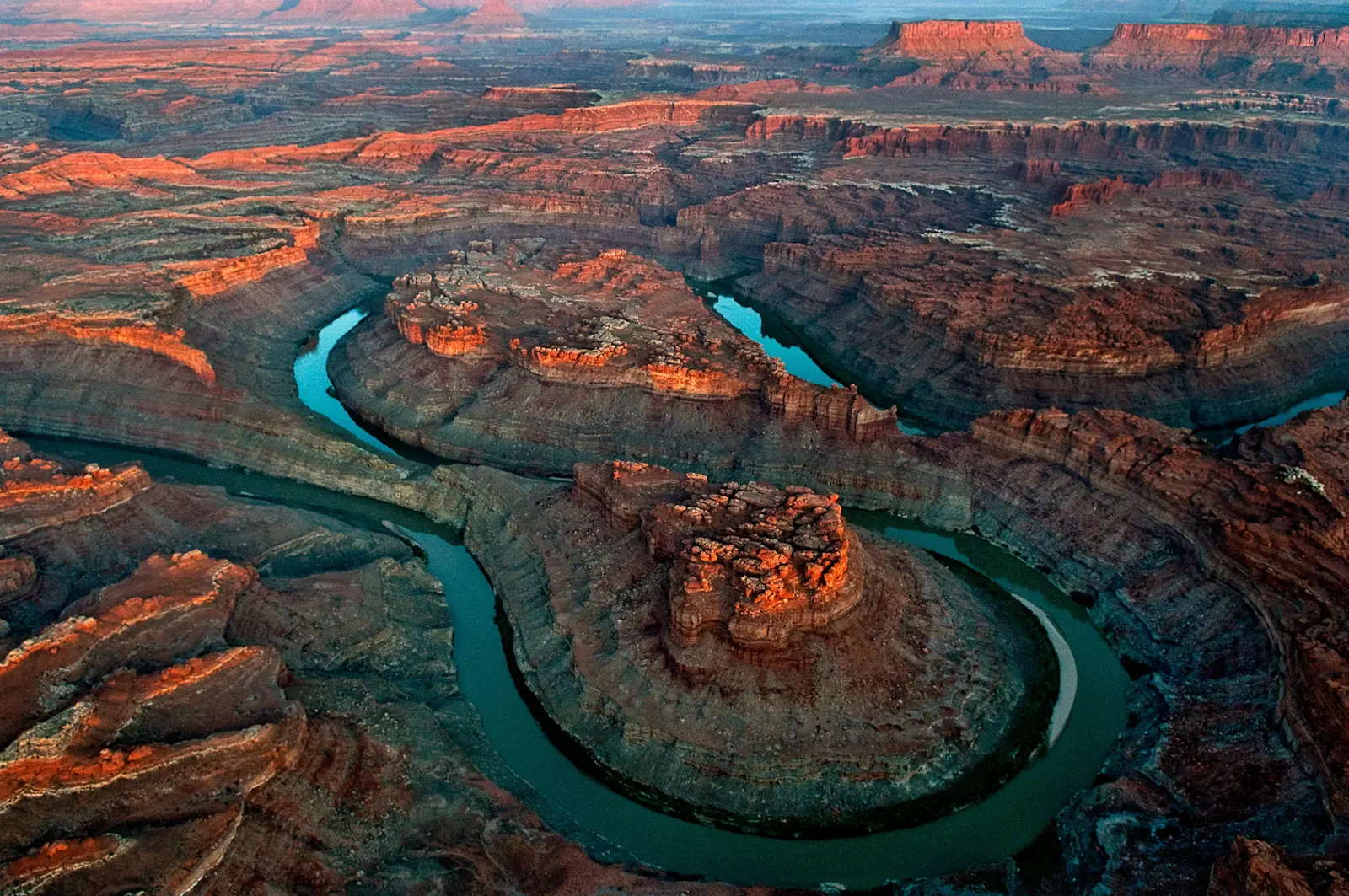
A journey through Utah's Mighty Five is an exploration of nature's artistry and power. Each park, with its unique features and landscapes, provides a distinct experience and a deeper appreciation for the natural world. From the arches of Arches to the hoodoos of Bryce, the canyons of Zion to the reefs of Capitol Reef, and the vast wilderness of Canyonlands, the Mighty Five are a testament to the beauty and diversity of the American Southwest. This quintet of parks is not just a series of destinations; it's an adventure, a journey through time and space, offering awe-inspiring views, challenging hikes, and the chance to connect with nature in its most pristine form.
Zion National Park: A Tapestry of Natural Wonders
Zion National Park, nestled in the heart of southwestern Utah, is a sanctuary of natural beauty and diverse landscapes. With its towering cliffs, deep canyons, and verdant valleys, Zion offers a mesmerizing tapestry of geological wonders and serene wilderness. The park's centerpiece, Zion Canyon, carved by the Virgin River over millions of years, presents a breathtaking fusion of color and grandeur, making it one of the most revered natural landscapes in the United States.
Zion's beauty extends beyond its famous canyon. The park's diverse ecosystem ranges from desert terrain to forested areas, creating a habitat for a wide array of flora and fauna. This diversity is on full display as one traverses the park, from the arid desert floor to the lush riverside vegetation. The kaleidoscope of colors – from the deep reds of the sandstone cliffs to the vibrant greens of the foliage – creates a visual feast for visitors.
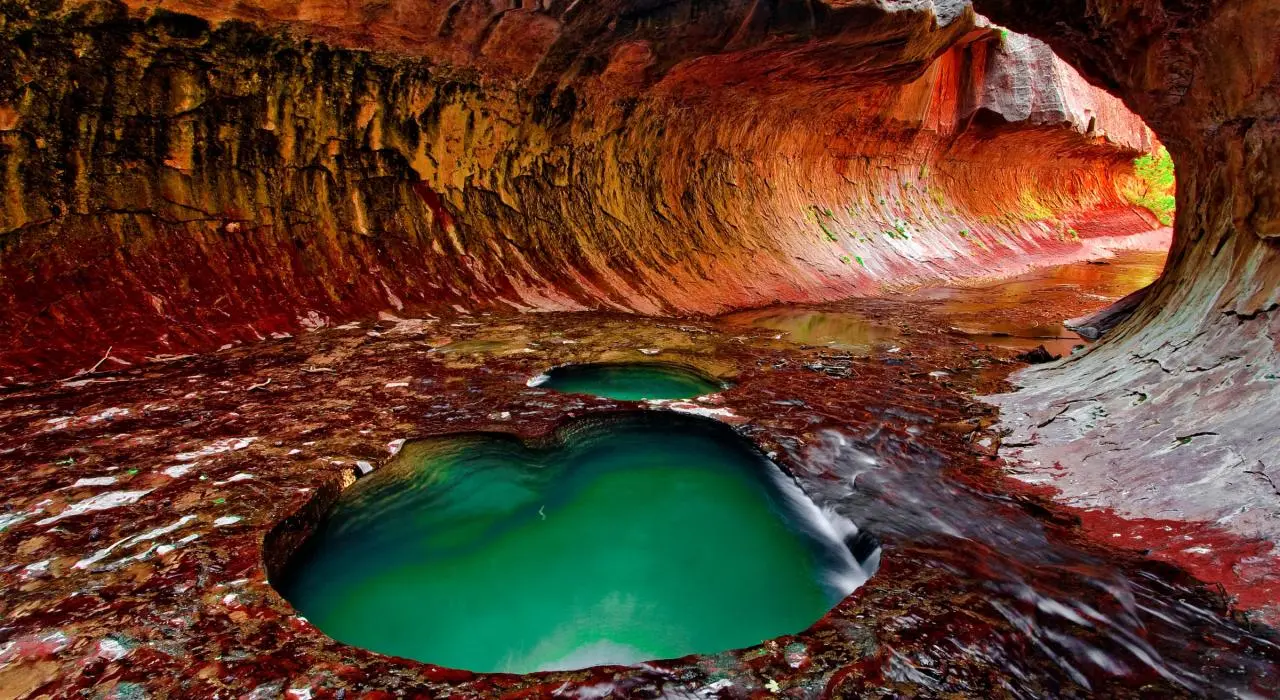
Hiking in Zion National Park is an experience unlike any other. The park offers trails for all skill levels, each providing a unique perspective of its natural beauty. The Narrows, one of the park's most iconic hikes, takes adventurers through the narrowest section of Zion Canyon, wading through the Virgin River with towering walls on either side. This hike is as challenging as it is rewarding, offering an immersive experience in the heart of the park's stunning geography. Another popular trail, the Emerald Pools, leads to a series of waterfalls and tranquil pools, set against the backdrop of lush vegetation and massive cliff faces.
For those seeking a more leisurely exploration, Zion’s scenic drives are equally captivating. The Zion Canyon Scenic Drive, which cuts through the main section of the park, offers panoramic views of the towering cliffs and access to various trailheads. The Zion-Mount Carmel Highway, with its switchbacks and tunnels, provides stunning vistas and a different perspective of the park’s diverse landscapes. These drives are perfect for those who wish to experience the beauty of Zion without venturing too far from the comfort of their vehicle.
River walks along the Virgin River are another way to enjoy Zion’s serene beauty. These gentle paths offer a peaceful experience, allowing visitors to enjoy the sound of flowing water, the sight of wildlife, and the cool shade of cottonwood trees. The Riverside Walk, a paved trail that leads to the start of The Narrows, is an easy stroll suitable for all ages and provides a glimpse into the riparian habitat that thrives along the river.
Zion National Park is not just a haven for hikers and nature enthusiasts; it's a place where history and culture intersect. The park's human history dates back thousands of years, from ancient Native American tribes to Mormon pioneers. This rich history is evident in various cultural sites within the park, including rock art and historic buildings, adding another layer of depth to the Zion experience.
Arches National Park: A Monument to Time
Arches National Park, located near Moab in southeastern Utah, is a breathtaking expanse that serves as a grand monument to the inexorable passage of time and the sculpting powers of nature. The park, famous for its more than 2,000 natural sandstone arches, stands as a testament to millions of years of geological history, each arch telling a story of erosion and endurance. The landscape of Arches is a dramatic display of fins, pinnacles, spires, and balanced rocks, painted in shades of red and orange that ignite under the sun’s rays.
The park’s most iconic feature, Delicate Arch, is a solitary span of stone that has become synonymous with Utah's natural beauty. Standing 46 feet tall and 32 feet wide, it is a geologic marvel, a must-see for visitors to the park. The hike to Delicate Arch, a 3-mile round trip journey, provides a mix of awe and anticipation as the arch slowly comes into view, revealing its full splendor against the backdrop of the La Sal Mountains. The sight of Delicate Arch, especially at sunset, is a transformative experience, a moment where one feels connected to the vast timeline of the Earth.
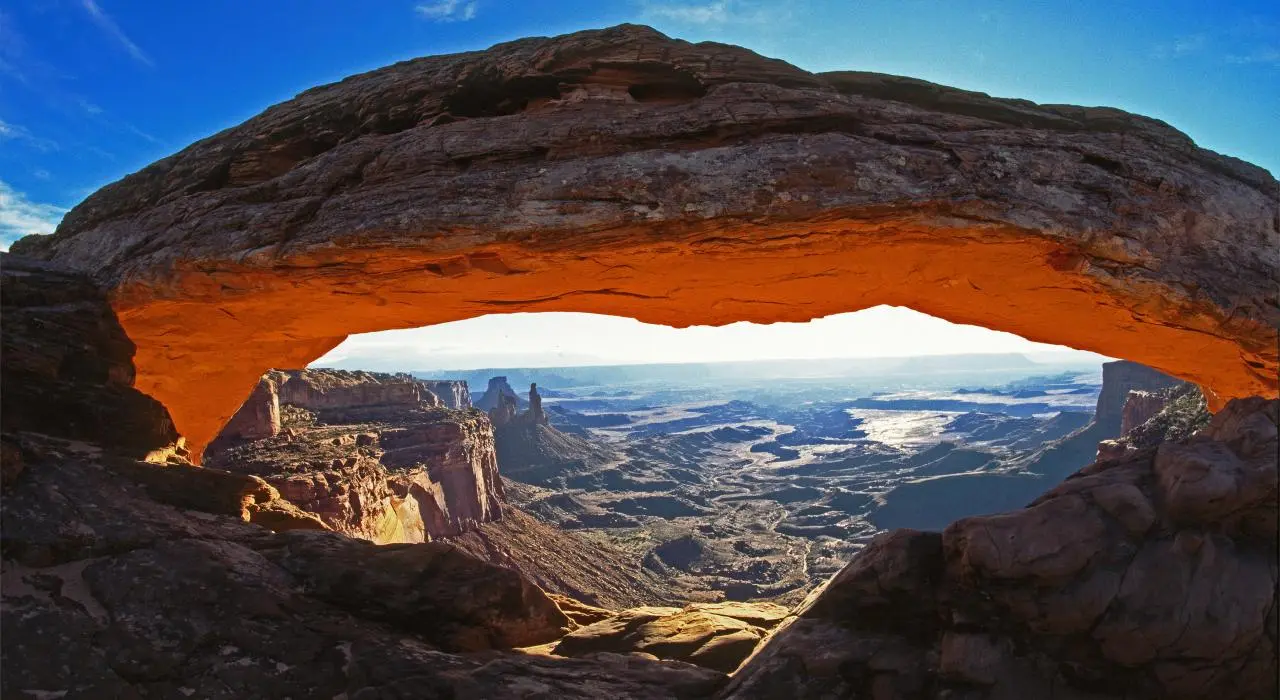
Another significant formation, Landscape Arch, in the Devil's Garden area, boasts one of the longest natural arch spans in the world. The fragility of this thin arch, stretching over 290 feet, is a visual reminder of the ever-changing nature of the landscape. The trail to Landscape Arch also offers views of other notable formations like Tunnel Arch and Pine Tree Arch, providing a comprehensive experience of the park's varied arches.
The Windows Section of the park presents another concentration of arches, including the North and South Window Arches and Turret Arch. These arches, easily accessible via a short hike, offer an up-close experience and fantastic photo opportunities. Nearby, Double Arch stands as a remarkable formation, two massive arches sharing a common end, creating a unique and impressive sight.
For photography enthusiasts, Arches National Park is a paradise. The interplay of light and shadow, especially during the golden hours of sunrise and sunset, accentuates the textures and contours of the arches, providing endless opportunities for stunning photographs. Balanced Rock, another famous feature, presents a striking image as a massive boulder precariously perched atop a slender pedestal. Photographers also flock to the Fiery Furnace, a labyrinth of narrow sandstone canyons and fins, offering a play of light that is both challenging and rewarding to capture.
Aside from its famous arches, Arches National Park is rich in other geological features. The Park Avenue trail, resembling a New York street flanked by skyscraper-like rock formations, offers an easy walk through one of the park's most scenic canyons. The Delicate Arch Viewpoint provides an alternative for those unable to make the hike to the arch, offering a distant but unobstructed view.
Winter Sports in Southern Utah: Beyond the Red Rocks
Southern Utah, a region typically celebrated for its red-rock landscapes and arid desert beauty, transforms into a winter sports haven as the colder months roll in. This transformation reveals a lesser-known side of the region, where snow-capped peaks and frosty meadows offer a playground for a range of winter activities. Among these, the area around Brian Head stands out as a premier destination for snowmobiling, skiing, and snowshoeing, showcasing Southern Utah's versatility as a year-round travel hotspot.
Brian Head, nestled in the high elevation of the Markagunt Plateau, is a small town that boasts Utah's highest ski resort. The Brian Head Ski Resort, with its over 360 inches of annual snowfall, offers excellent conditions for skiing and snowboarding. The resort features a variety of runs that cater to all skill levels, from beginner slopes to challenging terrain for the more experienced. The scenic vistas of red rock formations dusted with snow provide a unique backdrop, making skiing in Brian Head a visually stunning experience.
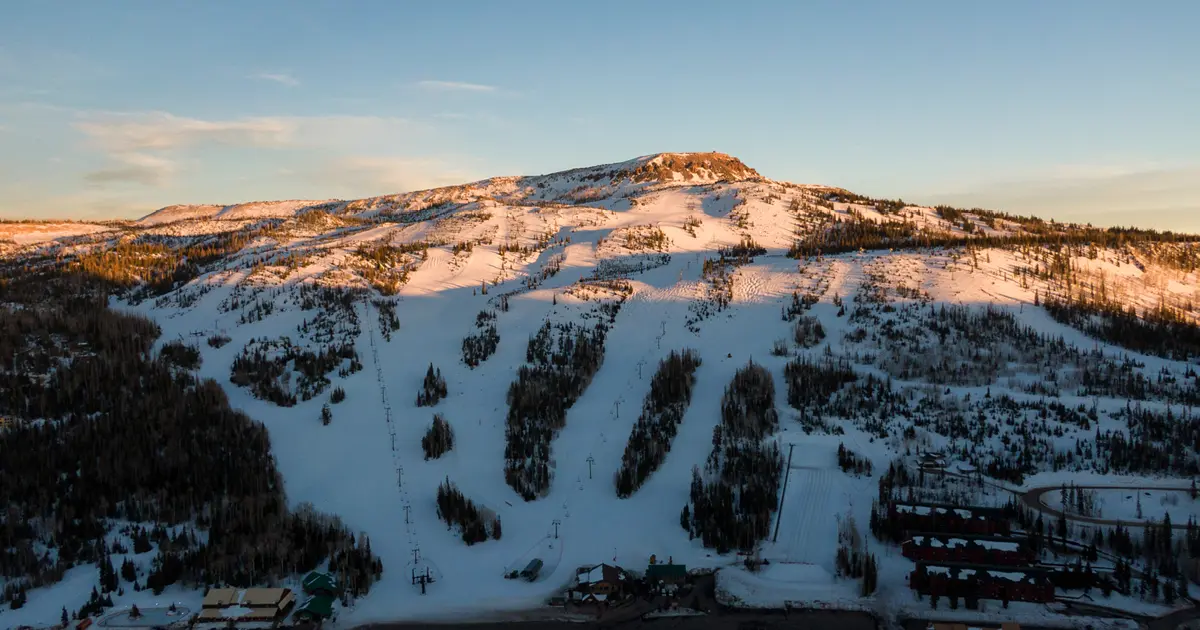
Snowmobiling in and around Brian Head is a thrilling way to explore the winter landscape of Southern Utah. Thunder Mountain Motorsports, among others, offers guided snowmobile tours that take adventurers through the back-country areas of the Dixie National Forest. These tours provide an exhilarating ride across the snowy terrain, with opportunities to traverse open meadows and dense forests, and to climb to high vantage points that offer breathtaking views of the surrounding area, including the famous Cedar Breaks National Monument.
Apart from skiing and snowmobiling, snowshoeing is another popular winter activity in Southern Utah, offering a more tranquil way to explore the snow-covered landscapes. Snowshoeing trails abound in the area, with routes ranging from easy, scenic walks to more challenging hikes through the hills and forests. This activity allows visitors to immerse themselves in the quiet beauty of the winter wilderness, with the chance to spot local wildlife and enjoy the crisp, clean air of the high desert.
The Bryce Canyon National Park, known for its iconic hoodoos, presents a surreal and magical scene in winter. The park organizes snowshoe hikes, led by rangers, that allow visitors to experience the park's amphitheaters and spires under a blanket of snow. The contrast of the bright orange rock formations against the white snow creates a striking and unforgettable landscape, offering a unique perspective on one of Utah’s most famous natural attractions.
Kanab: The Heart of Southern Utah's Outdoor Adventures
Kanab, a charming small town in Southern Utah, is often overlooked in the shadow of the region's more famous attractions. Yet, this hidden gem serves as a gateway to a plethora of natural wonders, offering a more intimate and personal encounter with the beauty of the American Southwest. Nestled in a picturesque setting, Kanab is not just a stopover but a destination in itself, with its proximity to several national parks and its array of unique local experiences.
The town of Kanab, known as "Little Hollywood" due to its history as a filming location for many classic western movies, exudes a quaint, old-world charm. Its streets are lined with historic buildings, local eateries, and art galleries, each telling a story of the town's rich heritage and cultural tapestry. The town also serves as a basecamp for exploring the surrounding natural landscapes, making it an ideal spot for outdoor enthusiasts.
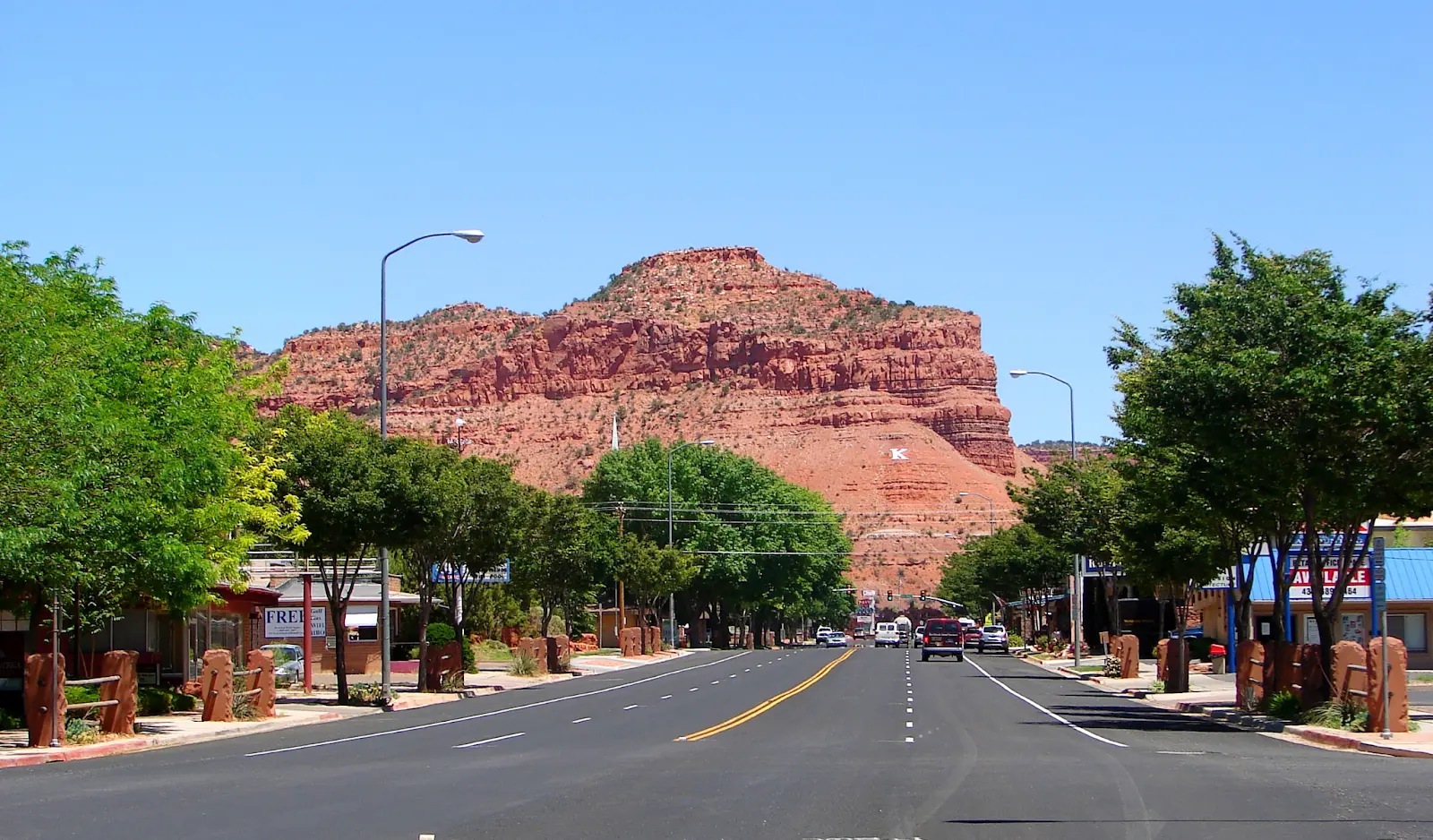
Kanab's location is strategic, positioned within easy driving distance of the Mighty Five National Parks - Zion, Bryce Canyon, Capitol Reef, Arches, and Canyonlands. This proximity allows visitors to embark on day trips to these iconic parks, returning to the tranquility of Kanab each evening. Each park offers a unique landscape, from the towering cliffs of Zion to the surreal hoodoos of Bryce Canyon, and Kanab provides the perfect starting point to explore these varied terrains.
Beyond the national parks, Kanab is surrounded by an abundance of other natural attractions. The Coral Pink Sand Dunes State Park, located just a short drive from the town, is a marvel of nature. The park features shifting dunes of pink-hued sand, a playground for ATV riding and sandboarding, or for those who prefer a more relaxed experience, a picturesque setting for a sunset stroll. The nearby Grand Staircase-Escalante National Monument offers rugged and remote wilderness for hiking, canyoneering, and exploring.
One of the most unique experiences near Kanab is the Wave, a dramatic sandstone rock formation located in the Vermilion Cliffs National Monument. The Wave's undulating forms and vibrant color patterns make it a coveted destination for hikers and photographers. Access to the Wave is limited and requires a permit, making it an exclusive and unforgettable experience for those who visit.
Conclusion
As our exploration of Southern Utah draws to a close, it's evident that this region is a tapestry of extraordinary landscapes and experiences, each thread woven with the colors and contours of nature's grand design. From the majestic arches of Arches National Park to the serene beauty of Zion, the whimsical hoodoos of Bryce Canyon to the vast wilderness of Canyonlands, and the hidden gems of Kanab, Southern Utah is a showcase of the Earth's splendor.
Reflecting on the journey through Southern Utah, one cannot help but be awed by the diversity of its landscapes. The Mighty Five National Parks each present a unique facet of nature's artistry, beckoning visitors to immerse themselves in their distinct environments. Arches National Park, with its over 2,000 natural stone arches, stands as a monument to time and erosion. Zion National Park, with its deep canyons and emerald pools, offers a sanctuary of tranquility and adventure. Bryce Canyon, with its amphitheaters of hoodoos, is like stepping into another world, where geology takes on fantastical forms. Capitol Reef, a hidden treasure with its cliffs and canyons, tells stories of ancient civilizations and pioneers. And Canyonlands, a vast expanse of wild and rugged terrain, invites the intrepid to explore its untouched beauty.
Beyond the national parks, Southern Utah is dotted with experiences that enrich the soul and enliven the spirit. The winter wonderland of Brian Head offers a refreshing contrast to the red-rock landscapes, where snowmobiling, skiing, and snowshoeing provide a different perspective of the region's beauty. The small town of Kanab, a gateway to outdoor adventures, exudes charm and serves as a base for exploring the lesser-known wonders of the area.
Southern Utah is a land of endless discovery, a region where every visit brings new sights and experiences. Its national parks, outdoor adventures, and hidden gems are a call to those who seek the extraordinary. Whether a first-time visitor or a returning explorer, the allure of Southern Utah's diverse landscapes and experiences remains timeless. It is a place that captures the heart, ignites the imagination, and leaves visitors with memories that last a lifetime. As each season unfolds, Southern Utah continues to reveal its beauty, inviting us to explore, to wander, and to marvel at the wonders of this magnificent corner of the world.


